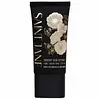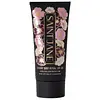What's inside
What's inside
 Key Ingredients
Key Ingredients

 Benefits
Benefits

 Concerns
Concerns

 Ingredients Side-by-side
Ingredients Side-by-side

Zinc Oxide 10%
Cosmetic ColorantWater
Skin ConditioningButylene Glycol
HumectantCaprylic/Capric Triglyceride
MaskingDimethicone
EmollientCetearyl Alcohol
EmollientCetearyl Olivate
Polyglyceryl-3 Diisostearate
EmulsifyingSorbitan Olivate
EmulsifyingJasminum Officinale Extract
MaskingHibiscus Sabdariffa Flower Extract
Skin ConditioningAdenium Obesum Callus Culture Extract
AntioxidantCetearyl Glucoside
EmulsifyingTriethoxycaprylylsilane
Camellia Sinensis Leaf Oil
AntioxidantTocopheryl Acetate
AntioxidantXanthan Gum
EmulsifyingPhenoxyethanol
PreservativeEthylhexylglycerin
Skin ConditioningIron Oxides
Zinc Oxide 10%, Water, Butylene Glycol, Caprylic/Capric Triglyceride, Dimethicone, Cetearyl Alcohol, Cetearyl Olivate, Polyglyceryl-3 Diisostearate, Sorbitan Olivate, Jasminum Officinale Extract, Hibiscus Sabdariffa Flower Extract, Adenium Obesum Callus Culture Extract, Cetearyl Glucoside, Triethoxycaprylylsilane, Camellia Sinensis Leaf Oil, Tocopheryl Acetate, Xanthan Gum, Phenoxyethanol, Ethylhexylglycerin, Iron Oxides
Water
Skin ConditioningCaprylic/Capric Triglyceride
MaskingDimethicone
EmollientButylene Glycol
HumectantSodium Olivate
CleansingSilica
AbrasiveCetearyl Alcohol
EmollientCetearyl Olivate
Sorbitan Olivate
EmulsifyingCaprylyl Glycol
EmollientNymphaea Coerulea Flower Extract
Skin ConditioningOrchis Maculata Flower Extract
Skin ConditioningPassiflora Edulis Fruit Extract
Skin ConditioningCamellia Sinensis Leaf Oil
AntioxidantPotassium Cetyl Phosphate
EmulsifyingStearic Acid
CleansingXylitylglucoside
HumectantAnhydroxylitol
HumectantCetearyl Glucoside
EmulsifyingTriethoxycaprylylsilane
Xylitol
HumectantTocopheryl Acetate
AntioxidantXanthan Gum
EmulsifyingCaprylhydroxamic Acid
Glycerin
HumectantWater, Caprylic/Capric Triglyceride, Dimethicone, Butylene Glycol, Sodium Olivate, Silica, Cetearyl Alcohol, Cetearyl Olivate, Sorbitan Olivate, Caprylyl Glycol, Nymphaea Coerulea Flower Extract, Orchis Maculata Flower Extract, Passiflora Edulis Fruit Extract, Camellia Sinensis Leaf Oil, Potassium Cetyl Phosphate, Stearic Acid, Xylitylglucoside, Anhydroxylitol, Cetearyl Glucoside, Triethoxycaprylylsilane, Xylitol, Tocopheryl Acetate, Xanthan Gum, Caprylhydroxamic Acid, Glycerin
Ingredients Explained
These ingredients are found in both products.
Ingredients higher up in an ingredient list are typically present in a larger amount.
Butylene Glycol (or BG) is used within cosmetic products for a few different reasons:
Overall, Butylene Glycol is a safe and well-rounded ingredient that works well with other ingredients.
Though this ingredient works well with most skin types, some people with sensitive skin may experience a reaction such as allergic rashes, closed comedones, or itchiness.
Learn more about Butylene GlycolCamellia Sinensis Leaf Oil is from the oil in tea plant leaves. The leaves of this plant also give us green, oolong, and black tea.
Many components of tea have anti-inflammatory properties. Polyphenols and L-theanine help soothe the skin and reduce irritation. L-theanine is an amino acid that makes up most of the amino acids found in tea leaves. The caffeine in Camellia Sinensis Leaf Extract helps calm inflamed blood vessels.
Camellia Sinensis leaves also contain Vitamin Bs, linoleic acid, magnesium, calcium, iron, and zinc.
Camellia Sinensis leaves also has antimicrobial properties.
Research has shown both drinking Camellia Sinensis Leaf Tea and applying it to the skin can help boost skin elasticity and hydration. Studies also show using tea extract may reduce sebum, or oil, production.
Learn more about Camellia Sinensis Leaf OilThis ingredient is an emollient, solvent, and texture enhancer. It is considered a skin-softener by helping the skin prevent moisture loss.
It helps thicken a product's formula and makes it easier to spread by dissolving clumping compounds.
Caprylic Triglyceride is made by combining glycerin with coconut oil, forming a clear liquid.
While there is an assumption Caprylic Triglyceride can clog pores due to it being derived from coconut oil, there is no research supporting this.
Learn more about Caprylic/Capric TriglycerideCetearyl alcohol is a mixture of two fatty alcohols: cetyl alcohol and stearyl alcohol. It is mainly used as an emulsifier. Emulsifiers help prevent the separation of oils and products. Due to its composition, it can also be used to thicken a product or help create foam.
Cetearyl alcohol is an emollient. Emollients help soothe and hydrate the skin by trapping moisture.
Studies show Cetearyl alcohol is non-toxic and non-irritating. The FDA allows products labeled "alcohol-free" to have fatty alcohols.
This ingredient is usually derived from plant oils such as palm, vegetable, or coconut oils. There is debate on whether this ingredient will cause acne.
Due to the fatty acid base, this ingredient may not be Malassezia folliculitis safe.
Learn more about Cetearyl AlcoholCetearyl Glucoside is a surfactant and emulsifier. It can be produced from synthetic of natural sources of cetearyl alcohol and glucose.
Emulsifiers help prevent ingredients from separating, such as oils and waters. It can also be used to enhance the texture of products.
As a surfactant, Cetearyl Glucoside helps during the cleansing process. By gathering all the dirt and oils, it allows these molecules to be washed away easily.
Learn more about Cetearyl GlucosideCetearyl Olivate is an emulsifier and texture enhancer. It is derived from the fatty acids of olive oil and Cetearyl alcohol, and is biodegradable.
As an emulsifier, it is used to prevent oils and waters from separating. It can also
Manufacturers use the name Olivem 1000. This ingredient has been found to preserve the natural microbiome of skin. Having a healthy microbiome helps keep our skin healthy and protects against harmful bacteria. This ingredient is grouped with Sorbitan Olivate under the name Olivem 1000.
Learn more about Cetearyl OlivateDimethicone is a type of synthetic silicone created from natural materials such as quartz.
What it does:
Dimethicone comes in different viscosities:
Depending on the viscosity, dimethicone has different properties.
Ingredients lists don't always show which type is used, so we recommend reaching out to the brand if you have questions about the viscosity.
This ingredient is unlikely to cause irritation because it does not get absorbed into skin. However, people with silicone allergies should be careful about using this ingredient.
Note: Dimethicone may contribute to pilling. This is because it is not oil or water soluble, so pilling may occur when layered with products. When mixed with heavy oils in a formula, the outcome is also quite greasy.
Learn more about DimethiconeSorbitan Olivate is created from the fatty acids in olive oil and sorbitol.
This ingredient is an oil in water emulsifier. It helps stabilize a product by preventing oils and waters from separating. Sorbitan Olivate also helps hydrate the skin.
Manufacturers sell sorbitan olivate under the name OliveM 1000. OliveM 1000 a multifunctional ingredient. It is self-emulsifying. According to a manufacturer, OliveM 1000 does not disrupt natural skin biome.
Due to its olive oil base, this ingredient may not be fungal-acne safe.
Learn more about Sorbitan OlivateTocopheryl Acetate is AKA Vitamin E. It is an antioxidant and protects your skin from free radicals. Free radicals damage the skin by breaking down collagen.
One study found using Tocopheryl Acetate with Vitamin C decreased the number of sunburned cells.
Tocopheryl Acetate is commonly found in both skincare and dietary supplements.
Learn more about Tocopheryl AcetateTriethoxycaprylylsilane is a silicone used to bind and stabilize ingredients.
As an emulsifier, it helps prevent ingredients from separating. This can help elongate the shelf life of products.
Triethoxycaprylylsilane is often used to coat mineral sunscreens ingredients to help give a better feel. It also helps reduce oxidative stress in sunscreens.
Learn more about TriethoxycaprylylsilaneWater. It's the most common cosmetic ingredient of all. You'll usually see it at the top of ingredient lists, meaning that it makes up the largest part of the product.
So why is it so popular? Water most often acts as a solvent - this means that it helps dissolve other ingredients into the formulation.
You'll also recognize water as that liquid we all need to stay alive. If you see this, drink a glass of water. Stay hydrated!
Learn more about WaterXanthan gum is used as a stabilizer and thickener within cosmetic products. It helps give products a sticky, thick feeling - preventing them from being too runny.
On the technical side of things, xanthan gum is a polysaccharide - a combination consisting of multiple sugar molecules bonded together.
Xanthan gum is a pretty common and great ingredient. It is a natural, non-toxic, non-irritating ingredient that is also commonly used in food products.
Learn more about Xanthan Gum